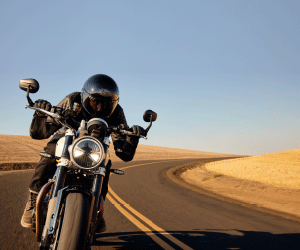On the launch date of this K1 generation of the GSX-R 1000, Suzuki already had in its ranks a sportbike that was considered by many an excellent bike in the segment, the GSX-R 750, but with over 1000 cc they only had the GSX-R 1100, which despite being very powerful and fast, was not exactly a reference in terms of handling. Therefore, the Japanese brand had no problems in taking advantage of much of its 750 cc, from the engine to the frame (both with changes), to create the GSX-R 1000. Thus, the engineers of the Japanese brand gave birth to an engine with 999 cc, 160 hp and 108 Nm of maximum torque. An engine that would be the basis for many generations of the GSX-R, and simultaneously a reference in the segment for many years. And after 21 years, we can say that its availability continues to impress. This bike seems always ready for action, with an engine full of soul from very early on, and that reveals all its splendor above 8,000 rpm, stretching its potential up to 12,000 rpm. It’s true, the GSX-R 1000 is very fast, even by today’s standards. And with the absence of electronics, it is important to know how to manage all the potential of this engine and control the throttle well.
STANDARDS HAVE CHANGED

The engine can still put a huge smile on your face, thanks to its power, availability, and wonderful sound – especially with the well-known Akrapovic exhaust from that time – but there are areas where Suzuki was no longer a reference in its time, and certainly even further away today. Braking has always been the Achilles’ heel of this bike, and we confirmed that in this test. It takes a lot of pressure on the right lever to stop the GSX-R and the feel itself is not the most precise, despite the 320 mm discs. And it is important to remember that it does not have ABS. As for the suspension, the K1 is equipped with a fully adjustable 43 mm inverted Kayaba fork, and a fully adjustable monoshock at the rear.
All of this, together with a sturdy double beam aluminum frame, gave the GSX-R 1000 good maneuverability and a high-level sporty behavior, combined with a comfortable riding position for street use. While this bike may be far from current sport bikes in terms of performance, it is well positioned for comfort on the road, thanks to its handlebar position and wide seat.
EXCELLENT EXAMPLE
The bike we tested had about 50,000 km on it, keeping the basic mechanics essentially the same, with the exception of the Akrapovic exhaust, as mentioned before. The engine, after more than 20 years, still maintains a smooth and flawless sound, and the bike showed no signs of fatigue. Despite its 170 kg dry weight, we clearly felt that the evolution of suspensions, the entire chassis of current super sports bikes, and technology make the GSX-R 1000 K1 somewhat outdated. But don’t be fooled, there is much to explore in the first generation of this Japanese sportbike, and it remains a very fast and fun bike. And there is always something about the absence of electronics that attracts us. Is it because we know that everything depends only on us? Perhaps.











